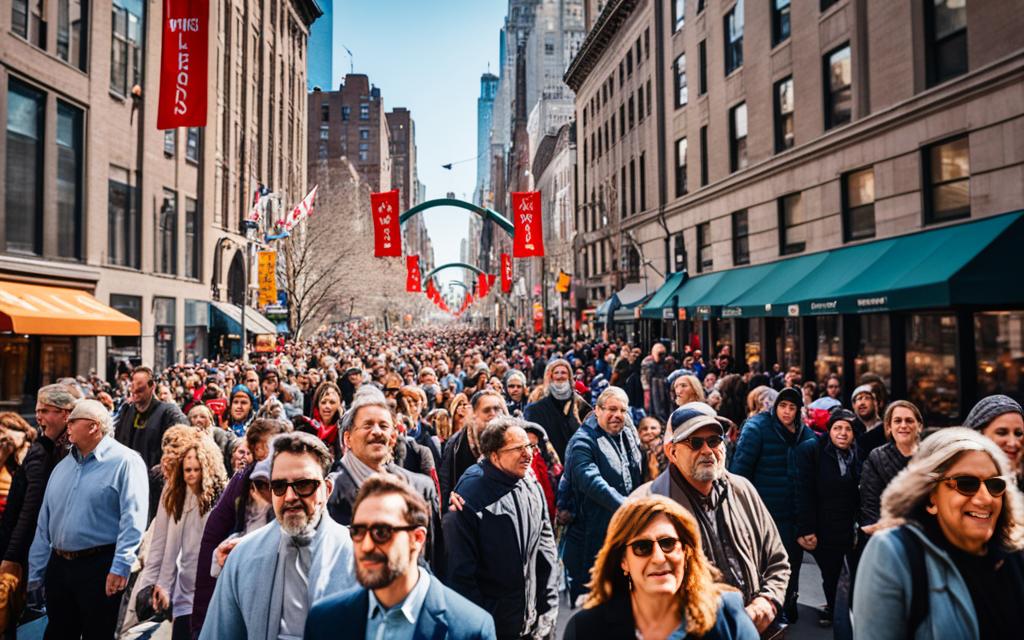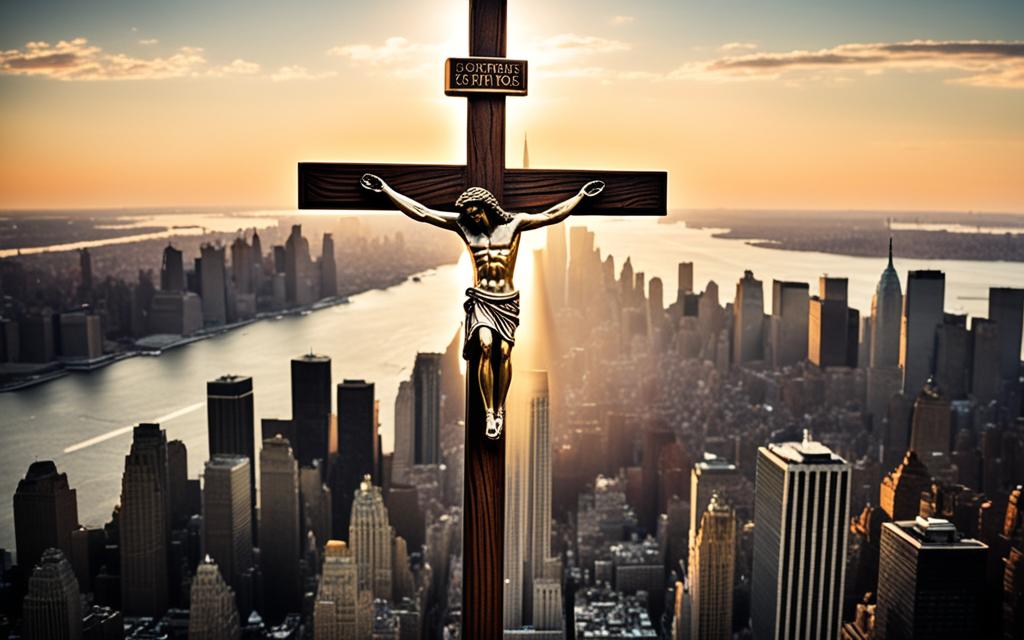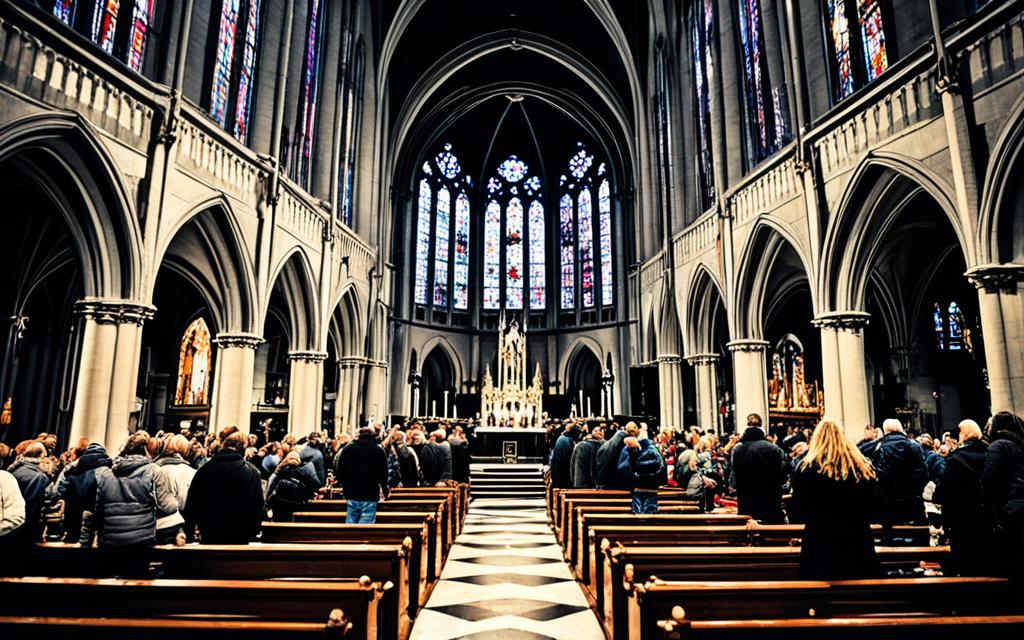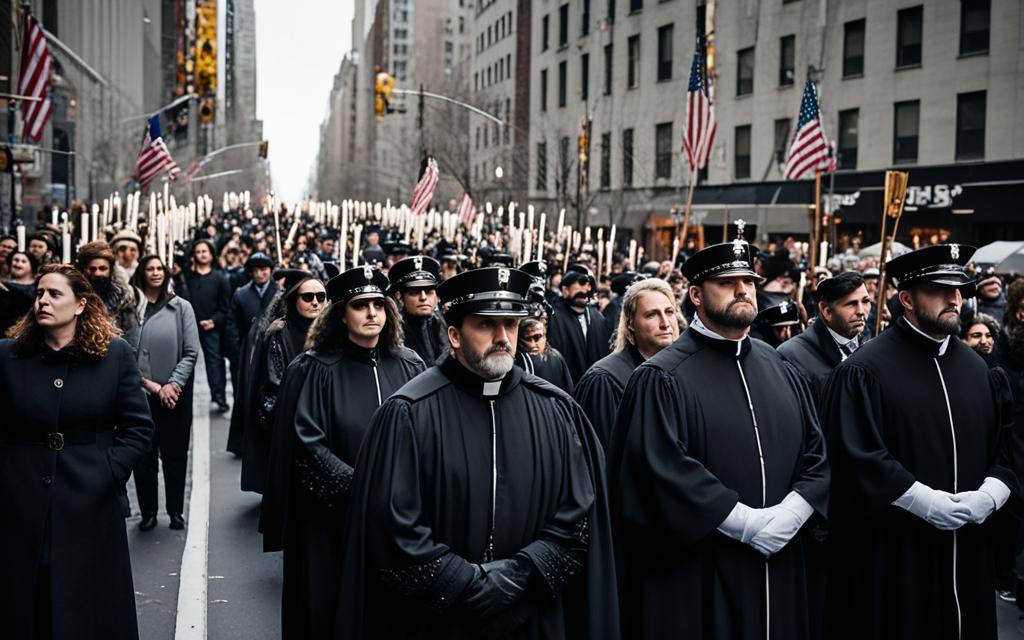Good Friday is an important religious observance in the United States, commemorating the crucifixion of Jesus Christ. It is observed two days before Easter Sunday and holds deep significance for Christians all over the world. On this day, Christians remember the sacrifices and suffering of Jesus, reflecting on the meaning of his death.
In New York, Good Friday in 2024 will be observed on March 29. It is a day when Christians come together to attend church services, engage in prayer vigils, and participate in various religious activities. While Good Friday is not a federal holiday in the United States, it is recognized as a state holiday in some states, including New York.
Is Good Friday a Public Holiday?
Good Friday is observed as a state public holiday in some states, including New York. It is a day when state government offices are closed and some schools and businesses may also suspend operations. However, it is important to note that Good Friday is not recognized as a federal holiday in the United States. Therefore, its observance as a public holiday varies from state to state.
In New York, Good Friday is considered a state holiday and is observed on the scheduled date. This means that state employees are entitled to a day off, and certain schools and businesses may align their operations accordingly. However, in states where Good Friday is not designated as a public holiday, regular work and school schedules may continue without interruption.
While Good Friday is not a federal holiday, it holds religious significance for many Christians who observe this day as a solemn occasion to commemorate the crucifixion of Jesus Christ. Churches and religious communities often hold special services and gatherings for prayer, reflection, and remembrance. Some individuals may also choose to engage in personal acts of devotion and participate in religious rituals.
Note: It is recommended to check local government announcements, employer policies, and school calendars to confirm the observance of Good Friday as a public holiday in a specific state or institution.
What Do People Do on Good Friday?
Good Friday is a day of observance and reflection for Christians worldwide. On this solemn occasion, there are various traditions and activities that people engage in to commemorate the crucifixion of Jesus Christ.
Church Services and Prayer Vigils
Many Christians attend special church services on Good Friday, where they participate in prayers, hymns, and sermons centered around Jesus’ sacrifice. Some churches also hold prayer vigils, where individuals come together to offer prayers and seek spiritual solace.
Mourning and Quiet Reflection
Good Friday is a day of mourning for Christians. It is a time for quiet reflection, introspection, and contemplation of Jesus’ suffering and sacrifice. Believers may spend the day in solemn contemplation, focusing on the spiritual significance of the crucifixion.
Symbolic Actions
“Candles may be extinguished and statues, paintings, and crosses may be draped in black, purple, or gray cloth.”
Symbolic actions are common on Good Friday, serving as visual reminders of Jesus’ sacrificial death. In churches and homes, candles may be extinguished to symbolize the darkness that fell upon the earth during Jesus’ crucifixion. Statues, paintings, and crosses are often draped in black, purple, or gray cloth to signify mourning and sorrow.
Partial Fasting
Some Catholics choose to observe a partial fast on Good Friday, which involves abstaining from eating meat. This practice symbolizes self-discipline and solidarity with Jesus’ suffering on the cross. However, the specific fasting practices may vary among different Christian denominations and individuals.
Limited Activities and Media Consumption
Many households maintain a quiet atmosphere on Good Friday, limiting their engagement in external activities and media consumption. This intentional withdrawal from worldly distractions allows individuals to focus on their faith, prayer, and personal reflection.
Hot Cross Buns
Hot cross buns are a traditional Good Friday treat in many cultures. These sweet buns, typically spiced and adorned with a cross made of icing or pastry, hold religious significance as they symbolize the crucifixion of Jesus. Baking and sharing hot cross buns is a cherished tradition for families and communities.
Religious Activities and Music
Good Friday is a time for engaging in religious activities beyond attending church services. Some individuals may choose to read religious texts, meditate, or engage in acts of charity. Others may participate in musical performances or listen to sacred music that reflects the somber mood and reverence of the occasion.
In combination with these practices, Good Friday serves as a day for introspection and strengthening one’s faith, allowing individuals to connect deeply with the profound significance of Jesus’ sacrifice on the cross.
Is Good Friday a Day Off in New York?
While Good Friday is not a national holiday in the United States, it is important to note that its observance varies from state to state. In the case of New York, Good Friday does have significance as a state holiday. However, whether it is a day off or not depends on the specific state’s holiday schedule and the policies of individual employers.
Good Friday Holiday Schedule in New York
Good Friday is recognized as a state holiday in New York. This means that some employees in New York may be given a day off to observe the occasion. However, it is not a universal day off for all employees, as it ultimately depends on factors such as employment contracts, collective bargaining agreements, or individual employer policies.
Observance of Good Friday in New York in 2024
In the year 2024, Good Friday will be observed on March 29 in New York. This is the designated date when many Christians commemorate the crucifixion of Jesus Christ. While it holds religious and cultural significance, the decision to provide a day off to employees lies with individual employers and their adherence to state holiday schedules.
Good Friday Observance Across New York
The observance of Good Friday in New York extends beyond the workplace. Many churches in the state hold special services and prayer vigils to honor the crucifixion and sacrifice of Jesus Christ. Christians may choose to attend these religious ceremonies, engage in personal acts of devotion, or participate in traditions associated with Good Friday.
It is important for individuals to consult their employers or refer to the state holiday schedule to determine whether Good Friday is considered a day off in their specific workplace. This will help them plan their activities and take part in any religious or cultural observances related to this significant day.
Good Friday and Public Life in New York
While Good Friday is not an official holiday in the United States, its observance can vary across different states and regions. In New York, where Good Friday is recognized as a state holiday, there may be some disruptions in public life.
Notable closures on Good Friday in New York:
- Financial markets may be closed or operate on a modified schedule.
- Some businesses, especially those with religious affiliations or practices, might choose to close for the day.
- Public schools and universities/colleges may follow a holiday schedule and remain closed.
While closures may occur in specific sectors, it’s important to note that many essential services and regular operations continue as usual on Good Friday in New York. Most governmental offices and courts do not close unless it is designated as a state holiday.
Public transport services may operate on a modified schedule during Good Friday, so it is advisable to check the schedules in advance for any changes to regular service.
Overall, while Good Friday is not a universally observed public holiday in the United States, its impact can be felt in areas where religious observance and cultural practices influence public life, including certain closures and adjusted schedules.
| Public Life on Good Friday in New York | Status |
|---|---|
| Financial Markets | Closed or Operate on a Modified Schedule |
| Businesses | Scheduled Closure at Discretion |
| Public Schools | May Follow a Holiday Schedule and Be Closed |
| Universities/Colleges | May Follow a Holiday Schedule and Be Closed |
| Government Offices | Regular Operations Unless Designated as a State Holiday |
| Courts | Regular Operations Unless Designated as a State Holiday |
| Public Transport | Operates on a Modified Schedule in Some Areas |

Background of Good Friday
Good Friday is a significant event in Christianity as it commemorates the crucifixion and death of Jesus Christ. It is part of Holy Week, a period of religious significance for Christians worldwide. Holy Week begins with Palm Sunday, during which Jesus made his triumphal return to Jerusalem. On Maundy Thursday, Jesus washed the feet of his disciples and shared the Last Supper with them. Good Friday marks the day when Jesus was crucified and represents the sacrifices and suffering in his life.
Good Friday falls during the Lenten season, a period of forty days of fasting, prayer, and penance leading up to Easter Sunday. It is a time for Christians to reflect on Jesus’ ultimate sacrifice for humanity and the redemption it offers. The Last Supper, which is commemorated on Maundy Thursday, holds great significance as it was the final meal Jesus shared with his disciples before his crucifixion.
The crucifixion of Jesus is a pivotal event in Christian faith, symbolizing God’s love for humanity and his willingness to sacrifice his son for the forgiveness of sins. Good Friday is observed as a solemn day of reflection, prayer, and devotion. Christians engage in various religious practices and attend church services that focus on the crucifixion and death of Jesus. It is a time to contemplate the significance of Jesus’ sacrifice and the hope and salvation it brings to believers.
Quote:
“For God so loved the world that he gave his one and only Son, that whoever believes in him shall not perish, but have eternal life.” – John 3:16
Symbols of Good Friday

The crucifix or cross is an essential symbol of Good Friday. It represents the way Jesus died and serves as a powerful reminder of his sacrifice. Many crosses bear a figure of Christ, further emphasizing his presence on the cross. On Good Friday, it is common to see crosses, paintings, and statues in churches and homes covered in black cloth. This act of draping signifies mourning and helps create a somber atmosphere, reflecting the solemnity of the occasion.
The crucifix symbolizes the central tenet of Christianity—the crucifixion of Jesus Christ—and the deep significance of Good Friday in the Christian faith. It serves as a visual representation of the ultimate act of love and redemption, reminding believers of the immense sacrifice made on this day.
Table: Symbolism of Good Friday
| Symbol | Meaning |
|---|---|
| Crucifix | Representation of Jesus’ crucifixion and sacrifice |
| Cross | Symbol of faith and redemption |
| Black Cloth | Signifies mourning and solemnity |
Good Friday Observances in Other Countries
Good Friday is not only observed in the United States but also in many other countries around the world. It is a significant day in the Christian calendar and is marked by various customs and traditions. While the specific observances may vary from country to country, the essence of Good Friday remains the same – to remember and reflect on the crucifixion of Jesus Christ.
One notable aspect of Good Friday observances is the variation in the date of its observance. Different countries follow different calendar systems, resulting in variations in the date of Good Friday. Despite these differences, the underlying significance of the day remains constant.
Good Friday is known by different names in different countries. In some places, it is referred to as Holy Friday, while in others, it is called Great Friday. These different names reflect the importance and reverence with which the day is regarded in various cultures.
Across the globe, Good Friday is often observed as a national holiday. This allows people to come together and participate in various religious and cultural activities that honor the solemnity and significance of the day.
Good Friday Observances Worldwide
- In Spain, Good Friday is observed with grand processions featuring ornate religious floats and participants dressed in traditional attire. The most famous of these processions take place in Seville and Malaga.
- In the Philippines, Good Friday is marked by the reenactment of Jesus’ crucifixion, known as the “Senakulo.” Devotees volunteer to be crucified or carry heavy wooden crosses as an act of penitence.
- In Italy, Good Friday is observed with somber religious processions, such as the “Via Crucis” (Way of the Cross) in Rome, where the Pope leads the faithful through the stations of the cross at the Colosseum.
- In Greece, Good Friday is known as “Megali Paraskevi” and is marked by evening church services and processions. The Epitaphios, a decorated bier representing Christ’s tomb, is carried through the streets by the faithful.
- In Mexico, Good Friday is a day of intense religious observance, with processions, reenactments, and passion plays taking place in various cities and towns. Some of the most significant events happen in Iztapalapa and Taxco.
Table: Good Friday Observances in Selected Countries
| Country | Observances |
|---|---|
| Spain | Grand processions featuring ornate religious floats |
| Philippines | Reenactment of Jesus’ crucifixion (“Senakulo”) |
| Italy | Somber religious processions, such as the “Via Crucis” |
| Greece | Evening church services and processions with the Epitaphios |
| Mexico | Processions, reenactments, and passion plays |
These examples merely scratch the surface of the diverse ways in which Good Friday is observed worldwide. The customs and traditions associated with this solemn day vary greatly, but they all serve to honor the crucifixion of Jesus and the profound impact it has had on the Christian faith.

Why is it Called ‘Good Friday’?
The origin of the name ‘Good Friday’ is not definitively known and has several possible explanations. Some suggest that “good” in this context is an Old English synonym for “holy.” Others believe it may be a corruption of the word “God” or derived from ‘God’s Friday’. The name may also reflect the message of Easter, which is the good news of Christ’s victory over sin and death.

To understand the significance of the name, it is important to delve into the history and meaning of Good Friday. This solemn day holds immense religious and cultural importance for Christians around the world.
Good Friday Traditions and Practices
Good Friday is observed with various traditions and practices around the world. Many churches hold special services in the afternoon, often between noon and 3pm, to reflect on the hours when Jesus was crucified. Some churches re-enact the process of the cross through the Stations of the Cross. Christians may participate in Veneration of the Cross, where they kneel before the cross and affirm their faith. In Jerusalem, Christians walk the Via Dolorosa, the traditional path to the crucifixion site. Various cultural practices, such as creating alfombras (decorated streets) in Central America or eating hot cross buns in the UK, are also associated with Good Friday.

| Traditions | Customs | Rituals | Services | Processions |
|---|---|---|---|---|
| Special church services in the afternoon | Re-enacting the process of the cross through the Stations of the Cross | Participating in Veneration of the Cross | Attending religious services and prayer vigils | Walking the Via Dolorosa in Jerusalem |
| Creating alfombras (decorated streets) in Central America | Eating hot cross buns in the UK |
Good Friday Observances in the US
In the United States, Good Friday is observed in different ways. While it is not a federal holiday, several states recognize it as a state holiday, leading to closures of government offices and other businesses in those states.
Good Friday is also a day of religious observance for many Christians, who participate in church services and engage in personal acts of devotion and reflection. The specific observances may vary based on individual beliefs and traditions.
Conclusion
Good Friday holds significant importance for Christians worldwide as it commemorates the crucifixion of Jesus Christ. This solemn day is marked by mourning, reflection, and deep devotion among believers. Although Good Friday is not recognized as a federal holiday in the United States, it holds state holiday status in certain states.
Good Friday is characterized by a range of traditions, customs, and observances that allow Christians to honor and remember the sacrificial act of Jesus on the cross. Through prayers, fasting, and attending special church services, believers engage in a day of profound spiritual contemplation. The significance of Good Friday extends beyond its religious implications, as it encourages individuals to reflect on themes of sacrifice, redemption, and the transformative power of faith in their own lives.
While some states observe Good Friday as a public holiday, it is important to recognize that it is not a day off for all Americans. However, the profound impact of this day is felt across the nation as Christians and communities come together to reflect on the ultimate sacrifice made by Jesus Christ for the salvation of humankind.





























